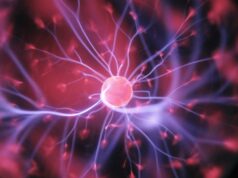
In the randomised HD-RECOVERY clinical trial, the use of high-definition transcranial direct current stimulation (HD-tDCS) has been found to be associated with a statistically significant increase in the number of ventilator-free days among critically ill COVID-19 patients.
Writing in the journal Brain Stimulation, Suellen Marinho Andrade (Federal University of Paraíba, João Pessoa, Brazil) and colleagues state: “HD-tDCS combined with concurrent rehabilitation therapy is a safe, feasible potential add-on intervention, and further trials should examine HD-tDCS efficacy in a larger sample of patients with COVID-19 and severe hypoxaemia.”
The authors begin by noting that HD-RECOVERY was conducted to evaluate the efficacy and safety of HD-tDCS alongside respiratory rehabilitation in patients with moderate-to-severe acute respiratory distress syndrome (ARDS) due to COVID-19.
In the trial, a total of 56 critically ill patients were randomised 1:1 to active (n=28) or sham (n=28) HD-tDCS plus respiratory rehabilitation for up to 10 days—or until intensive care unit discharge. Patients in both groups underwent two 30-minute stimulation sessions each day.
The primary outcome of the study was ventilator-free days during the first 28 days, defined as the number of days free from mechanical ventilation, the authors detail. Furthermore, secondary outcomes, such as delirium, organ failure, length of hospital stay and adverse effects, were also investigated.
Reporting their results, Andrade and colleagues state that active HD-tDCS induced more ventilator-free days than sham HD-tDCS. “This outcome suggests a clinically meaningful benefit of HD-tDCS in patients with severe COVID-19,” they assert. In addition, patients in the active group experienced lower rates of organ dysfunction and a reduced length of hospital stay, as compared to the sham group. The positive clinical response rate was also found to be higher in the active group.
There was no significant difference between the two groups regarding prespecified secondary outcomes at five days, the authors note, and adverse events were similar between groups—leading them to conclude that HD-tDCS plus respiratory rehabilitation was “tolerable and safe” in the study. “HD-tDCS was selected based on its established tolerability, portability, and focal cortical modulation, and shown here to be deployable to intensive care units,” they add.
Andrade and colleagues go on to state that, with regard to rates of delirium, active HD-tDCS was superior to sham HD-tDCS at 11 days, but not on day 28. “These time points reflect different clinical concepts and the presence of a ‘ceiling effect’ may explain these findings,” they write. “Future trials should consider monitoring delirium patients whose critical illness has resolved.”
Prior to concluding, the authors highlight several strengths of their study, including its pragmatic protocol—which is representative of a real-world setting— allocation concealment and blinding, the high percentage of follow-up at 28 days, and the robustness of their adverse events data. However, they also acknowledge a number of relevant limitations, such as the in-hospital study setting potentially limiting generalisability of the results to COVID-19 patients in other settings; the possibility of these results being influenced by COVID-19 treatment approaches changing over the course of the study; and the fact it was conducted prior to both widespread vaccination and circulation of the Delta (B.1.617.2) and Omicron (B.1.1.529) variants of the virus.
“The results of this trial support the early use of HD-tDCS associated with respiratory support of severe COVID-19 patients,” Andrade and colleagues summarise, before reiterating that additional research into the efficacy of brain stimulation in a large sample of pulmonary disease patients is warranted.













